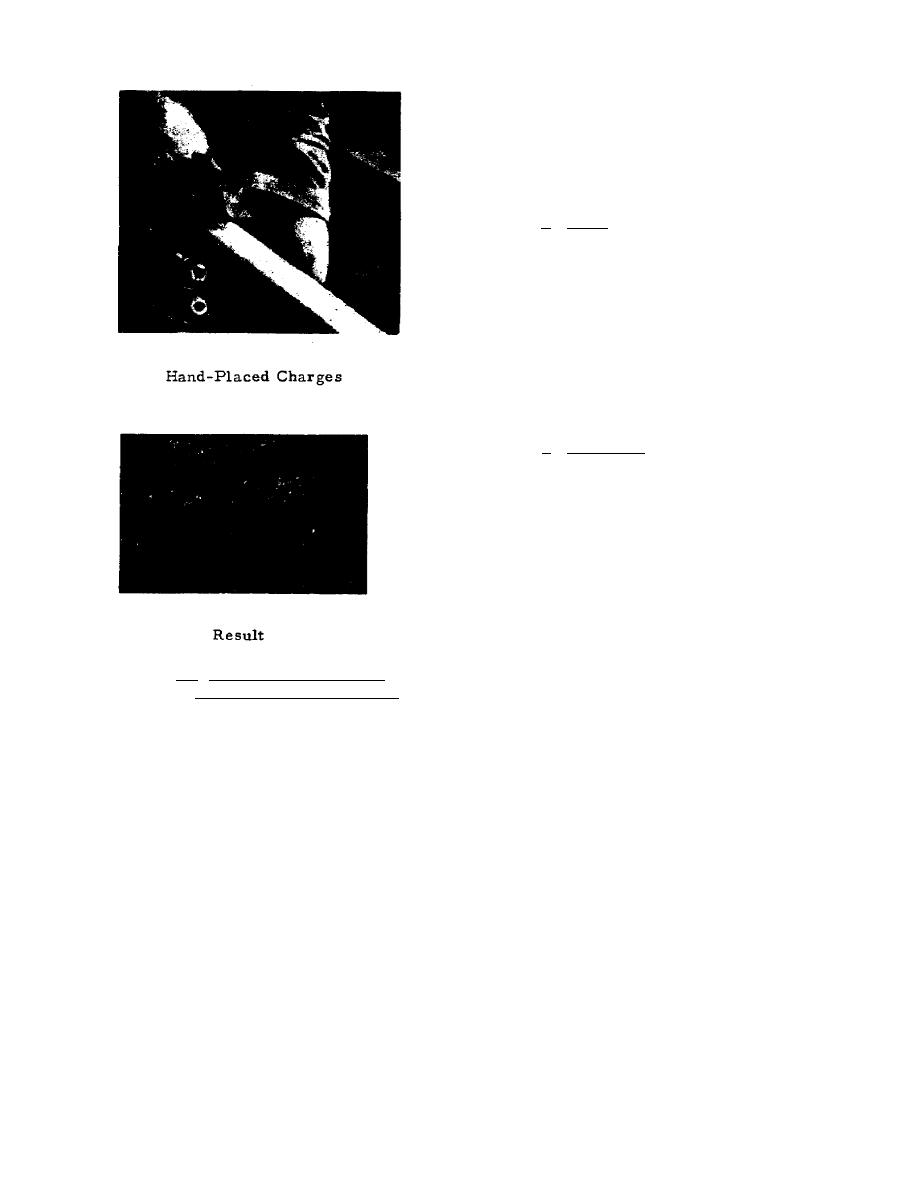
is not available, satisfactory results can be obtained
by raising the track and ties several inches off the
roadbed and starting fires underneath. Fires may
also be used to destroy bridges, roundhouses, and
structures, especially when they are of wood or of
wood and steel construction.
b. Water. Roadbeds may be severely
damaged by flooding with a sudden rush of water
from opened dams, diverted streams, or water
supply stations.
Holes in the roadbed, slope
failures, slides, shifted superstructures, washouts,
and undermined bridge foundations may result just
as they do from a natural breakthrough of a dam or a
flood. Water impact is often strong enough to result
in damage that may delay repair much longer than a
destroyed strip of rails and the ties or several
turnouts demolished by explosives.
c. Mechanical. Destruction by mechanical
means consists of using cranes to over-turn tracks,
earthmoving machinery to block the right of way,
locomotives to wreck and derail equipment, and a
tie ripper to destroy both track and ties. The tie
ripper, an ingenious device perfected by the
Germans, is shown in figure 5.7. It was attached to
a car and towed by three locomotives at an
approximate speed of 10 mph. It broke each tie in
the middle of the track and dug into the ballast. The
hook was equipped with a chute from which a 2.2-
pound charge of explosive was dropped on every
rail length, At a speed of 9.4 mph, and with a 20-
Figure 5.6. Securing Hand Charges to
second fuse, the charge detonated against the rail 55
Rail Web and Result Obtained.
yards behind the ripper. As evidence of its
destructiveness, in one 28-mile stretch over which it traveled, 6,000 rail breaks and 2,500 broken ties were found.
121



 Previous Page
Previous Page
